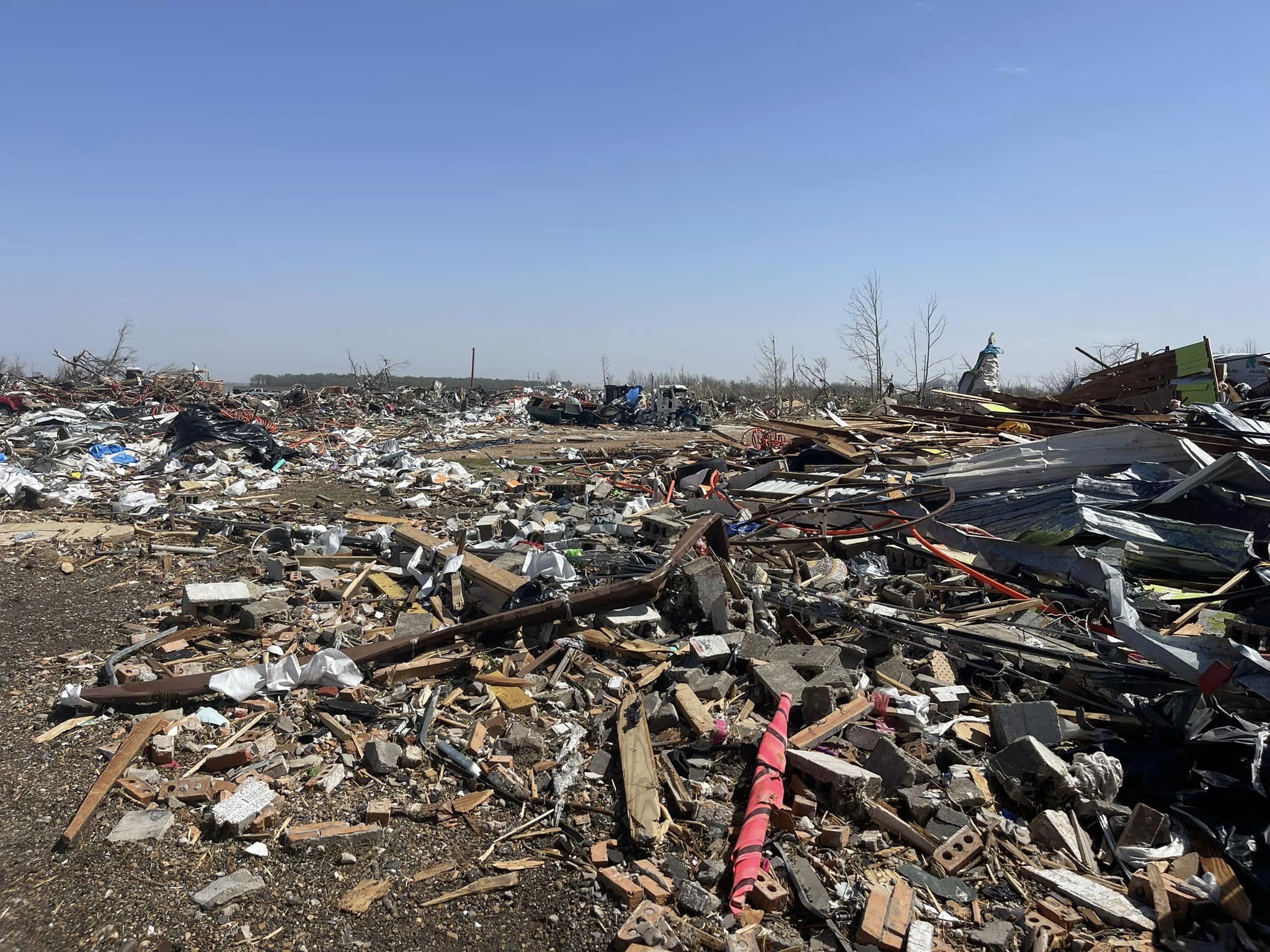Deadly tornadoes cause widespread devastation

We woke up the morning of Saturday, March 25, to the news that tornadoes across Mississippi and Alabama killed at least 23 people and completely devastated the town of Rolling Fork, Miss. The media coverage of the destruction shows multiple homes and businesses flattened. It’s heartbreaking.
At the Center for Disaster Philanthropy, we tracked the weather this week and sensed this might happen. Weather experts indicated all week long that conditions were ripe for volatile storms across the Southern United States. And, throughout the week, our partners already working across the U.S. on recovery from previous storms prepared to continue and expand their focus, knowing more communities would soon need their help. We’ve already seen an extraordinary number of tornadoes since the beginning of the year. In fact, according to the National Oceanic and Atmospheric Administration (NOAA), we experienced the third most active start for tornadoes in the first two months of a year in more than seven decades.
Why were these tornadoes so deadly?
Though all tornadoes can be deadly, the ones that struck Mississippi were especially violent. Record-setting heat and strong jet stream winds fueled these storms, which started their trek across the U.S. as a system that struck California earlier in the week and caused deadly flooding in the Midwest.
The historical and systemic marginalization of many populations in the affected areas – such as Black and low-income rural communities – contributed to the level of devastation. High levels of poverty with vulnerable housing resulted in significant damage. And nighttime storms are always more deadly – visual detection is impaired, and warnings can go unheeded.
What can philanthropy do?
We launched our Tornado Recovery Fund in January. We know the devastation these storms can cause and have regularly supported recovery from tornadoes since our founding. We know that it is common for destruction to happen in small towns or rural areas that don’t have the resources or infrastructure to recover quickly and equitably. We know that marginalized communities are always the most likely to be affected and have the slightest opportunity to recover. And we know that we must support them.
We have many resources to help as you consider how to respond. Reach out to us if we can be helpful to you.
As my colleague, Cari Cullen, the director of the Midwest Early Recovery Fund, said, “This is so devastating. The loss of life is horrific, and now these small communities are going to be in a fight for survival.”
Cari knows what’s in store. Much of her work is in tornado-affected, rural and marginalized communities. We all know these communities need us now and will continue to need us for the long term. Recovery will be particularly challenging here as communities didn’t have all they needed to thrive even before this weekend’s tornadoes. Now, what little they have has been destroyed.
